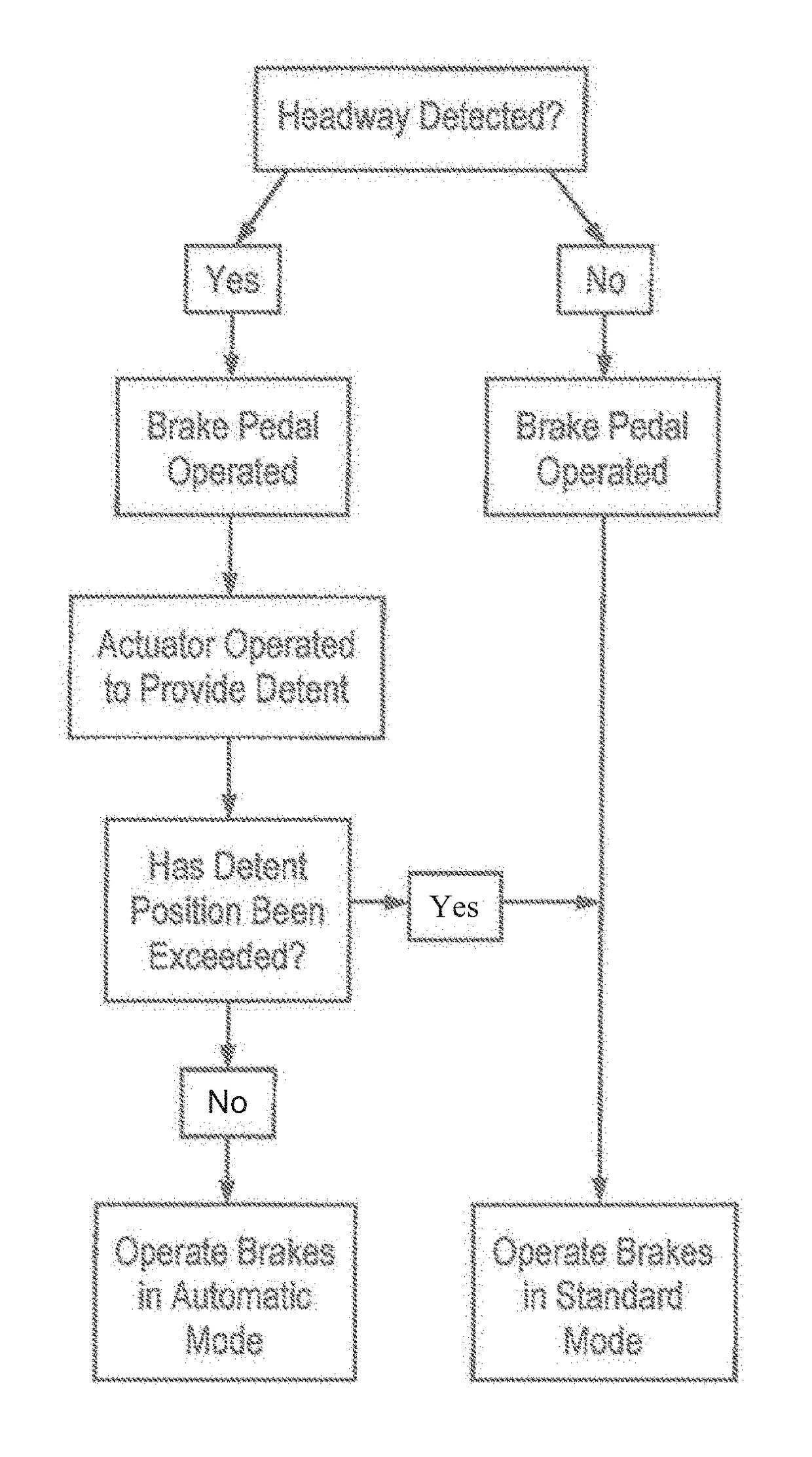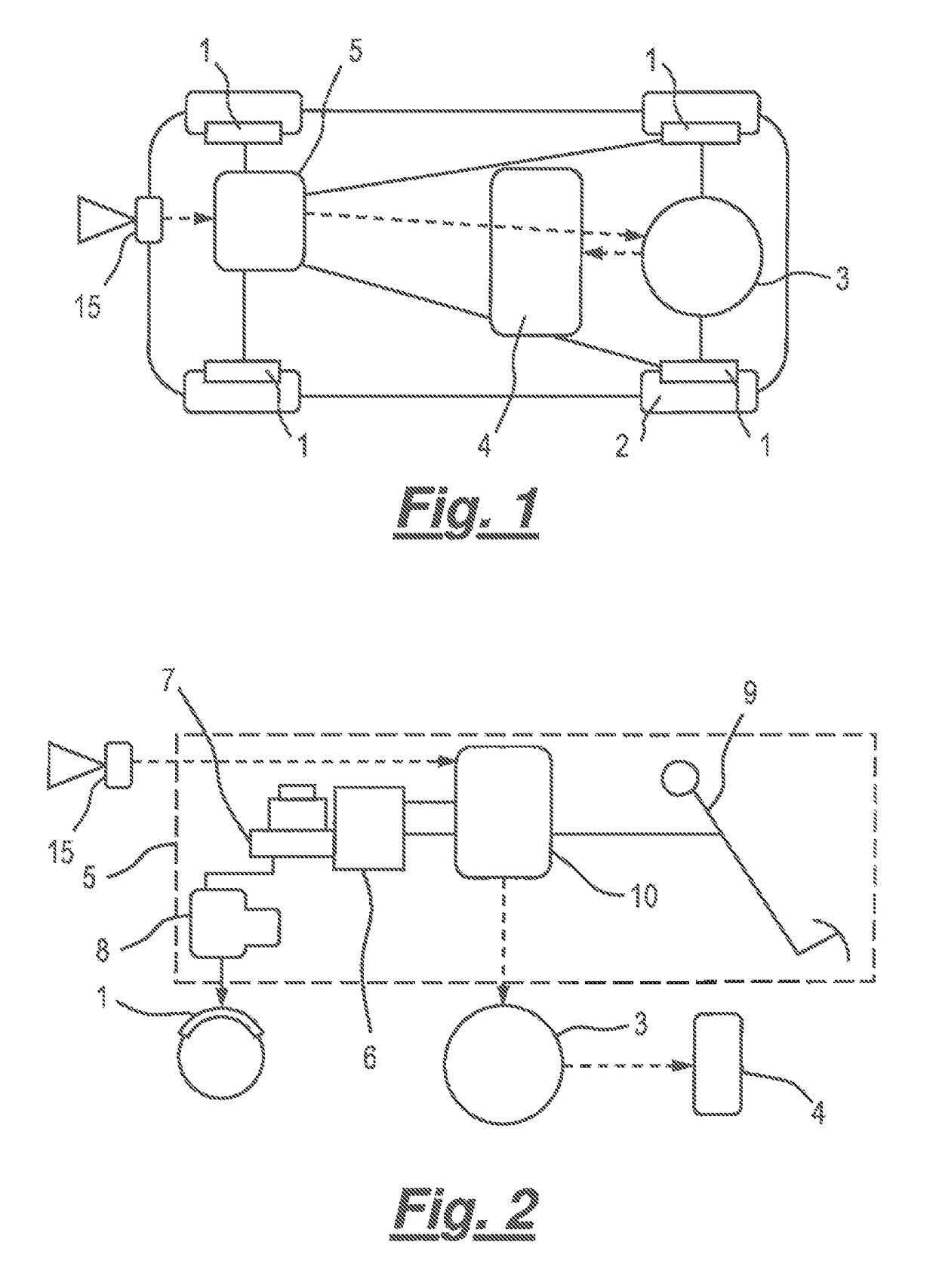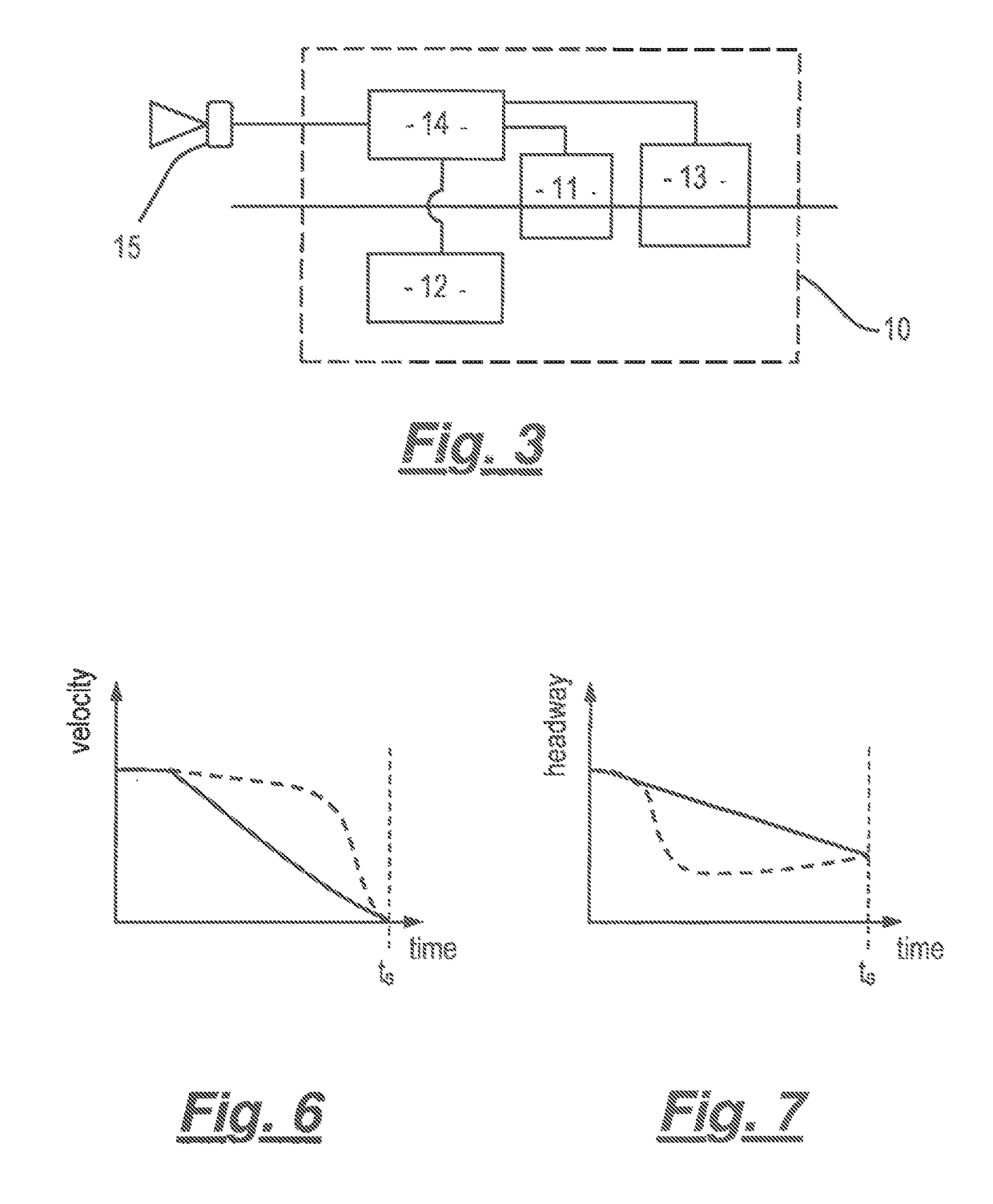Vehicle
a technology for vehicles and braking systems, applied in the field of vehicles, can solve the problems of limited amount of energy recovered by regenerative braking systems, and achieve the effects of maximizing use, supplementing regenerative braking, and optimising energy recovery
- Summary
- Abstract
- Description
- Claims
- Application Information
AI Technical Summary
Benefits of technology
Problems solved by technology
Method used
Image
Examples
Embodiment Construction
[0018]In order that the invention may be more clearly understood an embodiment thereof will now be described, by way of example only, with reference to the accompanying drawings, of which:
[0019]FIG. 1 is a schematic diagram of an automobile fitted with regenerative and friction braking systems and a brake control system;
[0020]FIG. 2 is a schematic diagram showing further detail of the brake control system of FIG. 1;
[0021]FIG. 3 is a schematic diagram showing further detail of the brake controller;
[0022]FIG. 4 is a flow chart showing an automatic brake operating mode;
[0023]FIG. 5 is a flow chart showing how a driver selects the automatic mode;
[0024]FIG. 6 is a graph showing automobile velocity against time; and
[0025]FIG. 7 is a graph showing automobile headway against time.
[0026]Referring to the drawing, and initially figure an automobile is provided with a friction braking system. This comprises conventional hydraulically actuated disc brakes 1, one for each of the four road wheels ...
PUM
 Login to View More
Login to View More Abstract
Description
Claims
Application Information
 Login to View More
Login to View More - R&D
- Intellectual Property
- Life Sciences
- Materials
- Tech Scout
- Unparalleled Data Quality
- Higher Quality Content
- 60% Fewer Hallucinations
Browse by: Latest US Patents, China's latest patents, Technical Efficacy Thesaurus, Application Domain, Technology Topic, Popular Technical Reports.
© 2025 PatSnap. All rights reserved.Legal|Privacy policy|Modern Slavery Act Transparency Statement|Sitemap|About US| Contact US: help@patsnap.com



